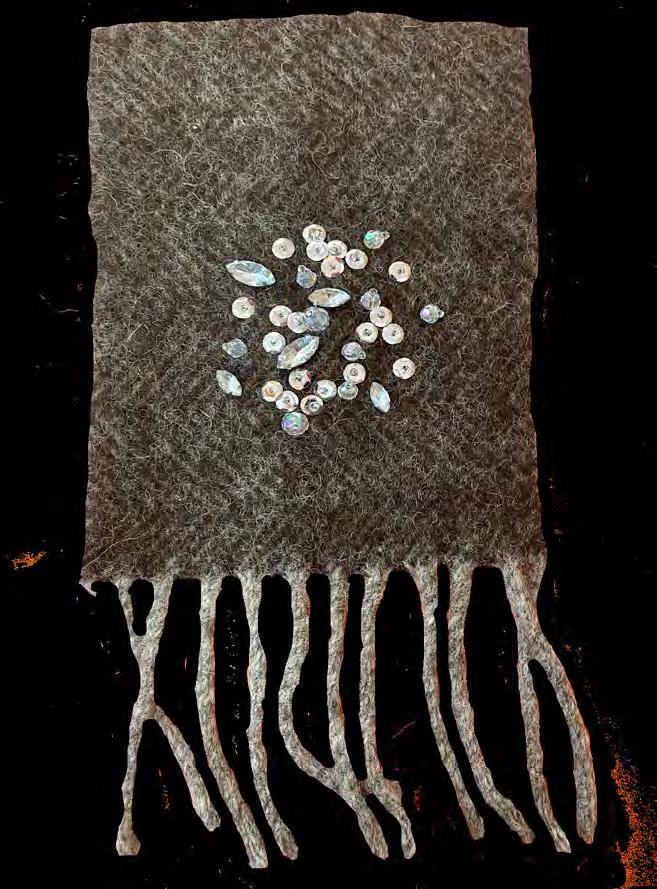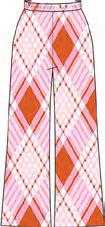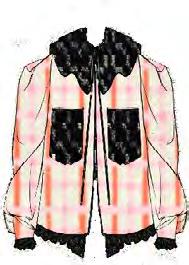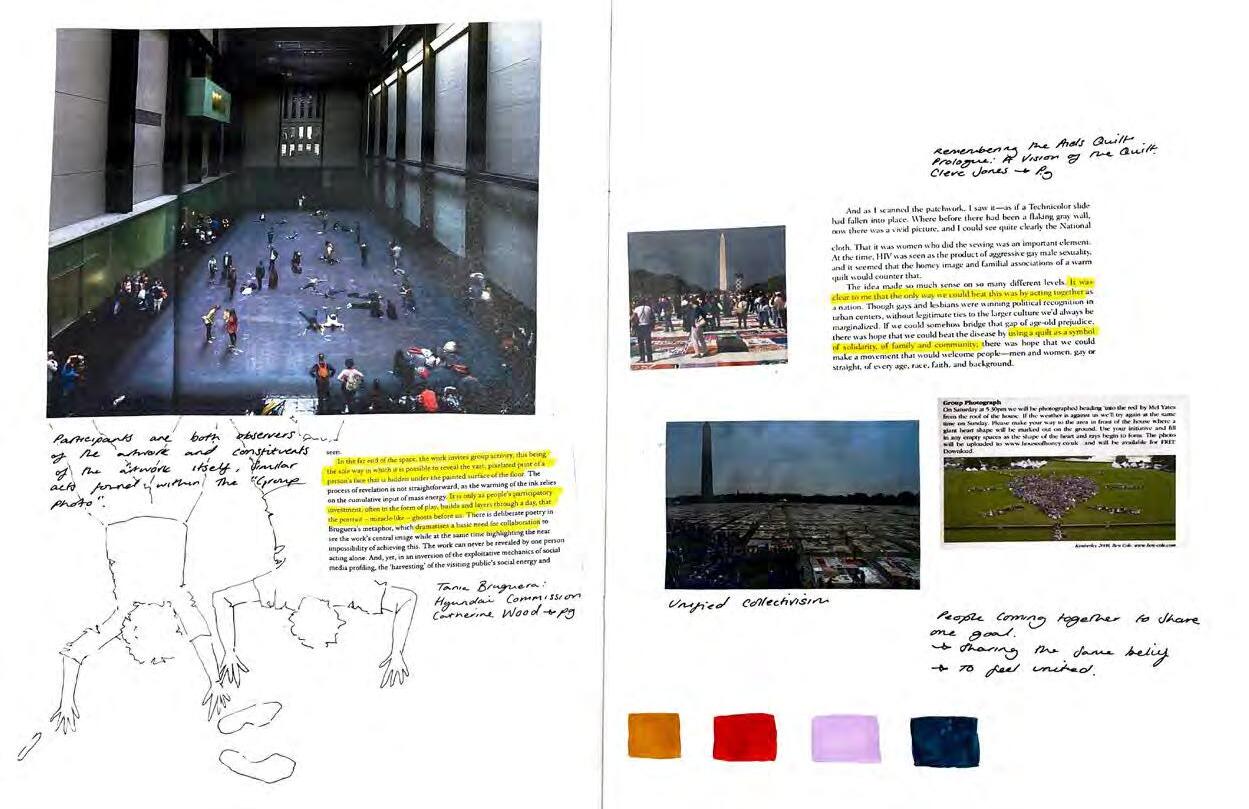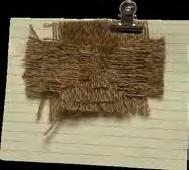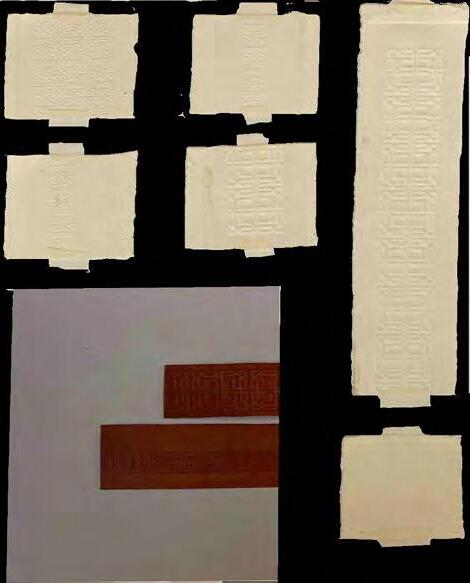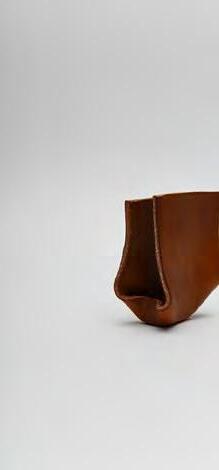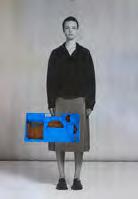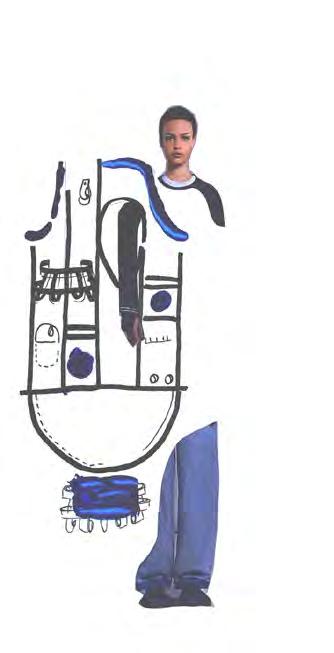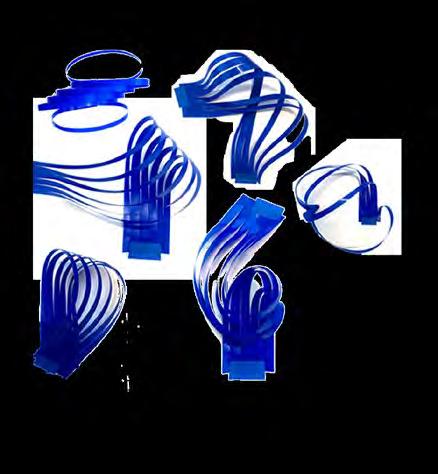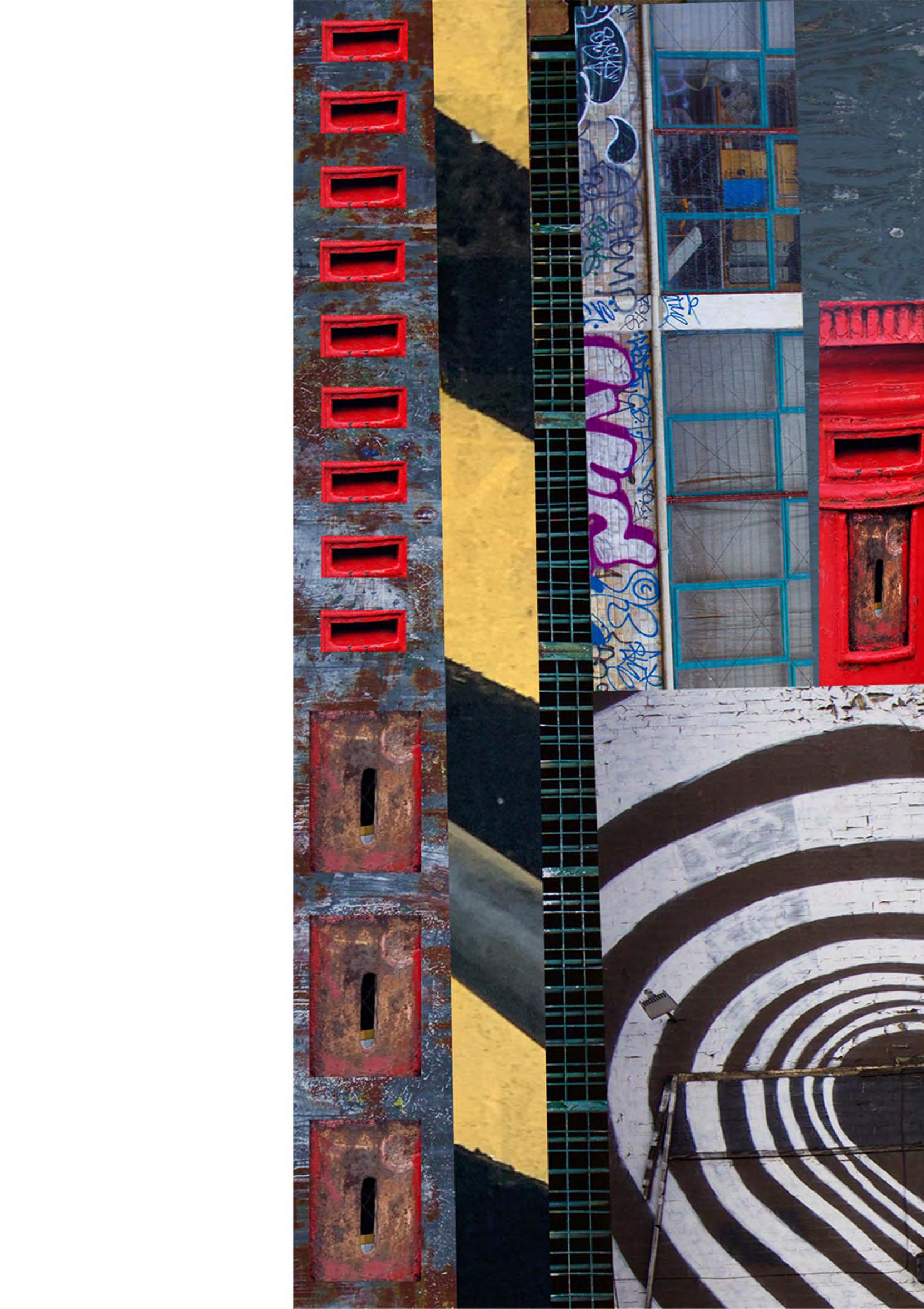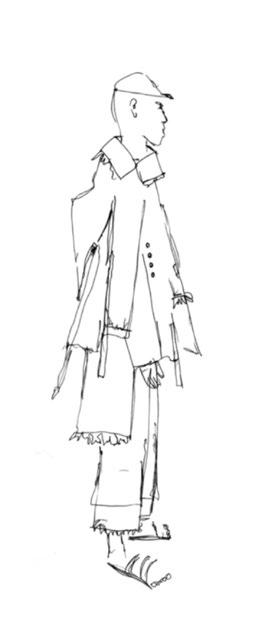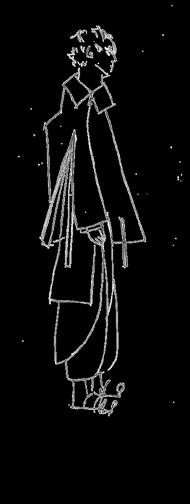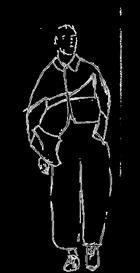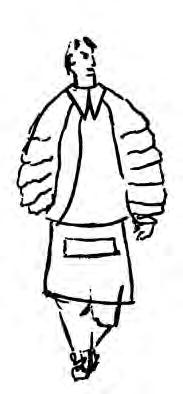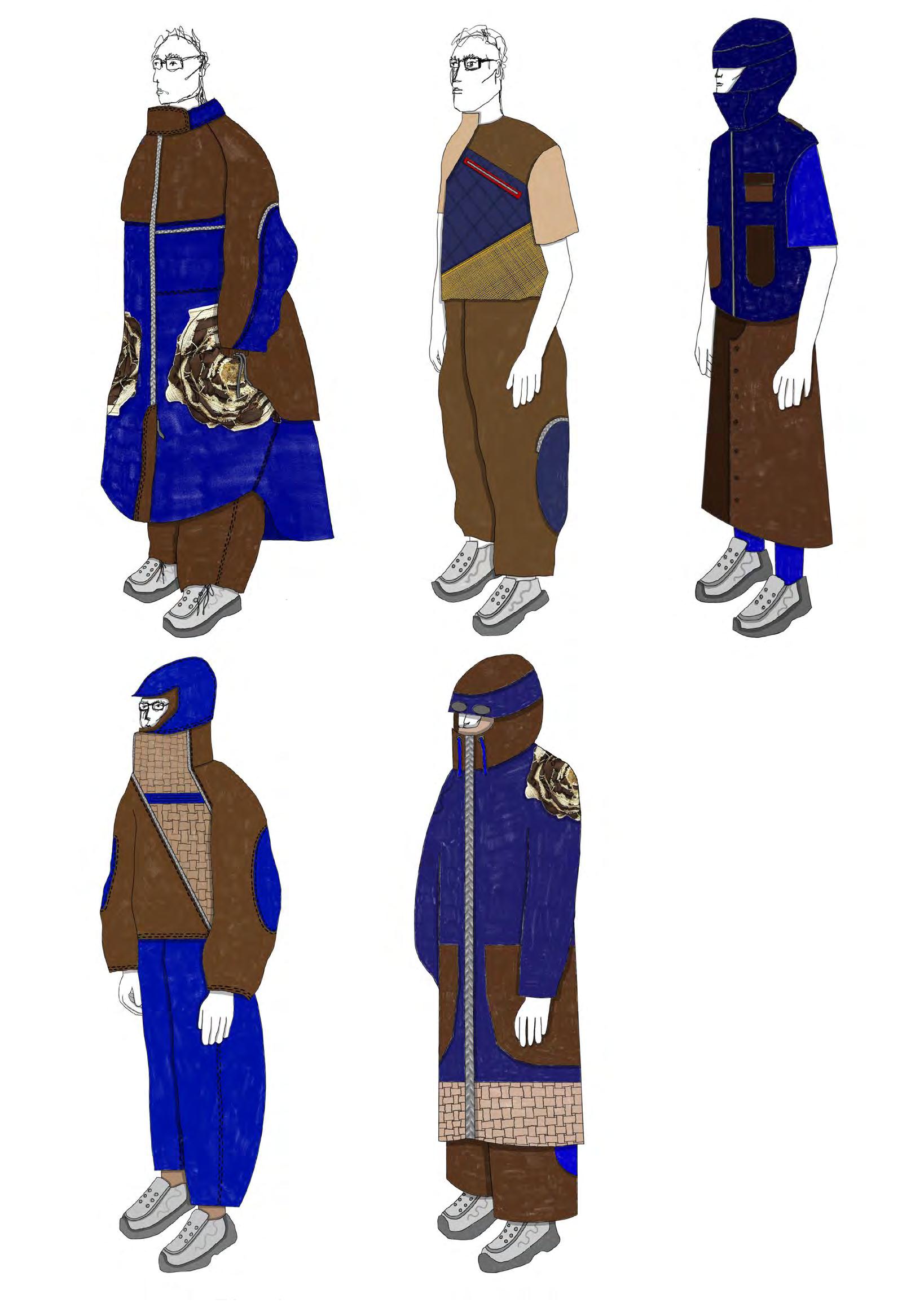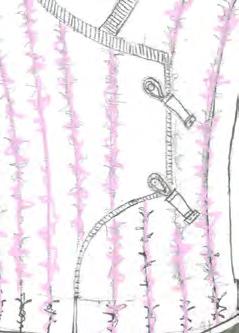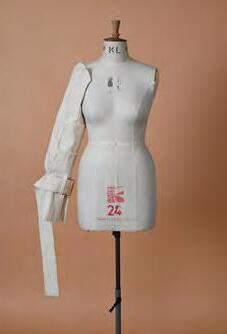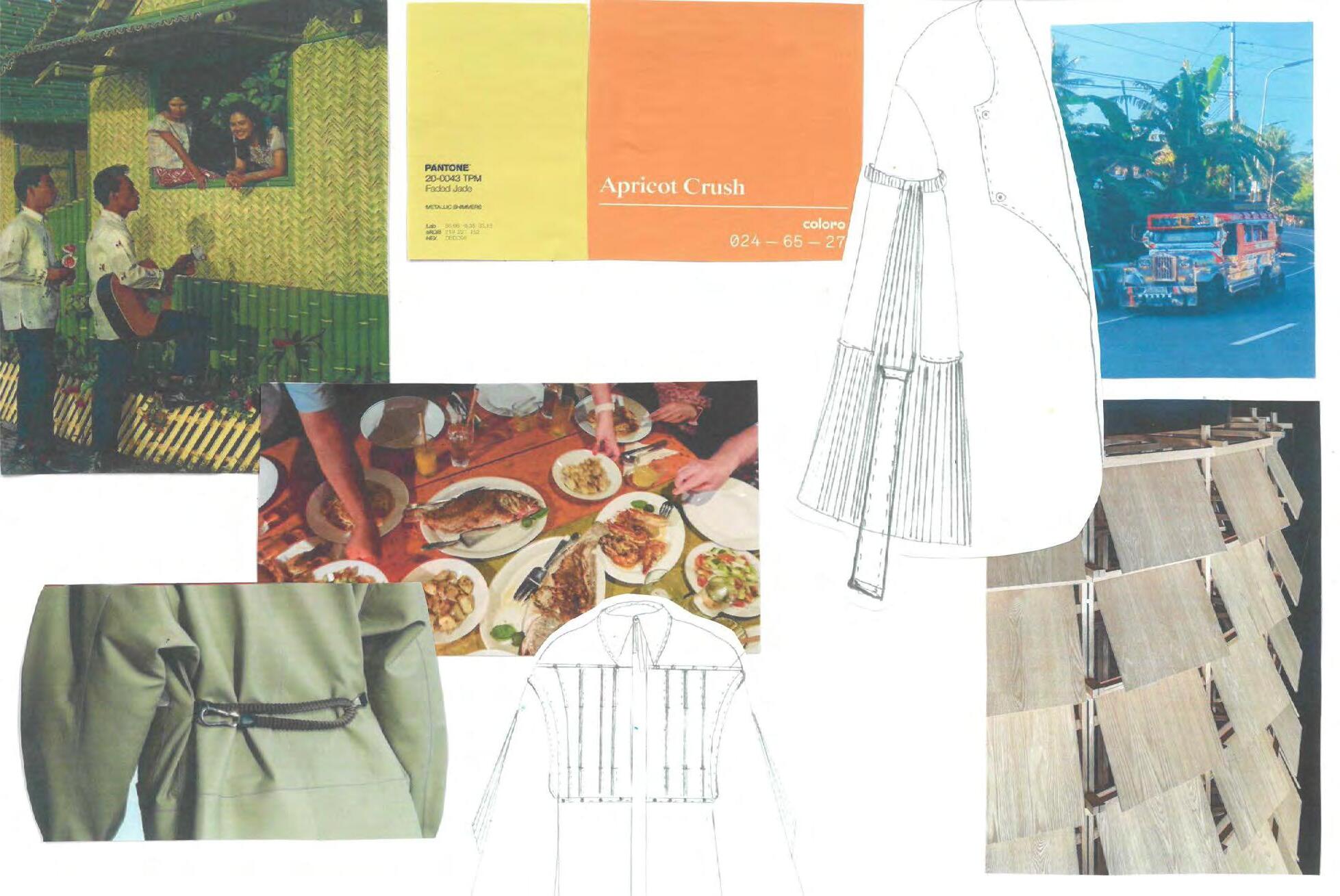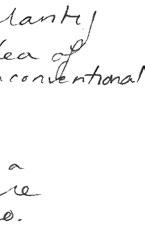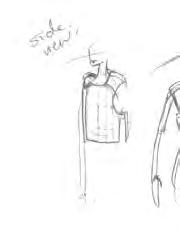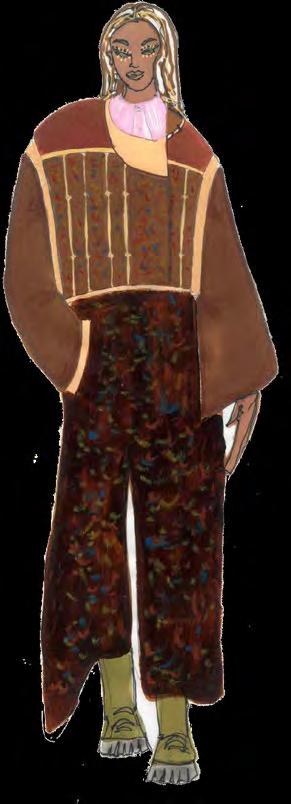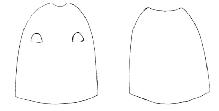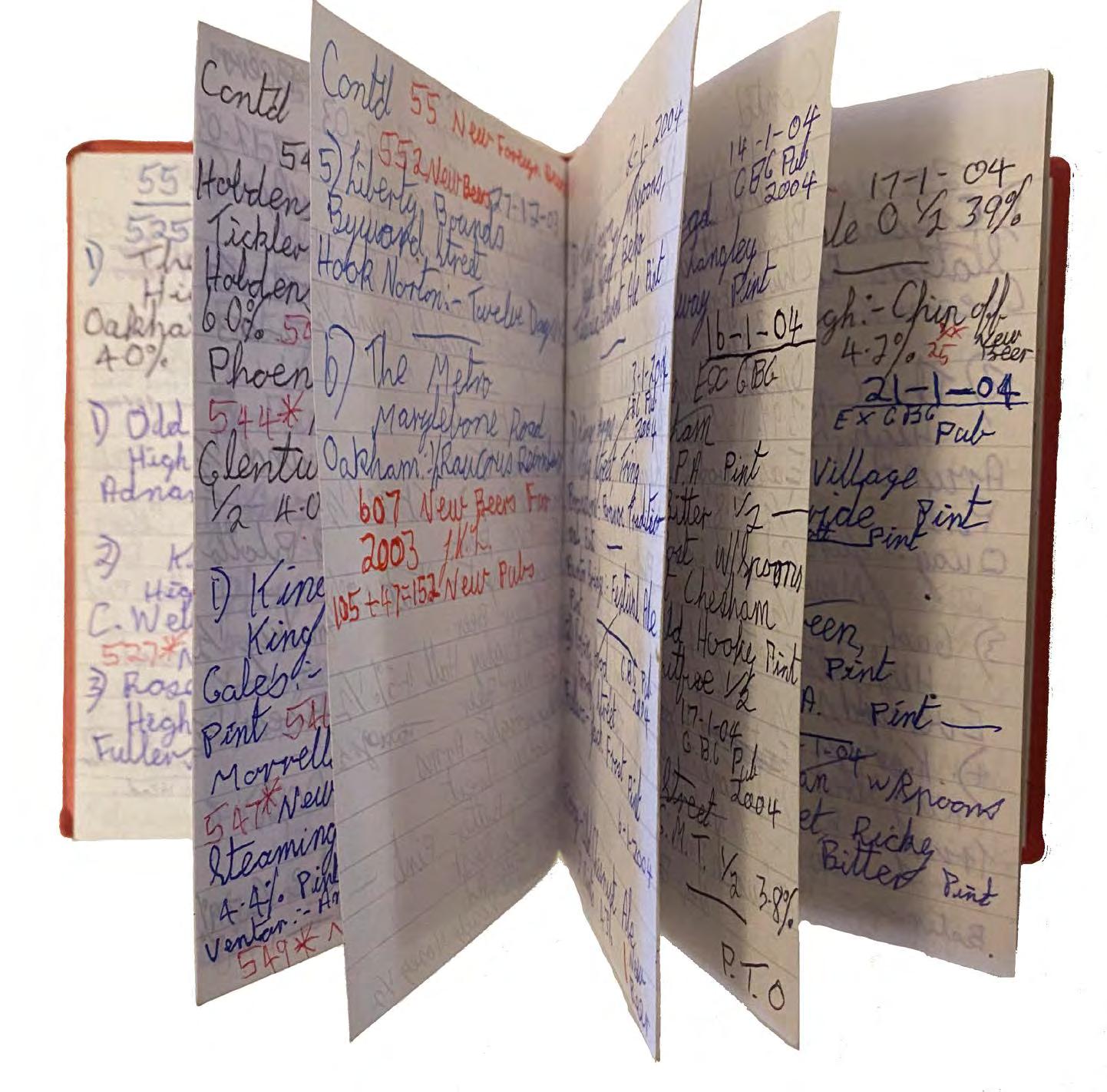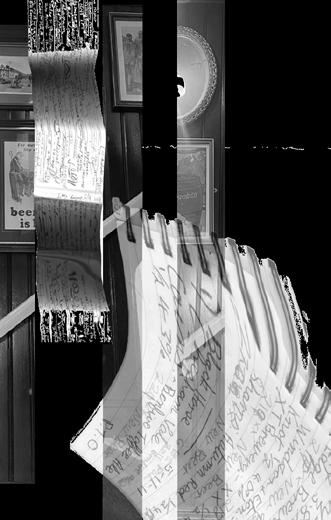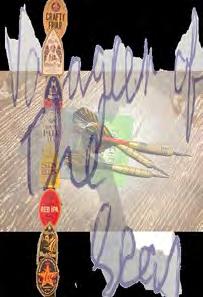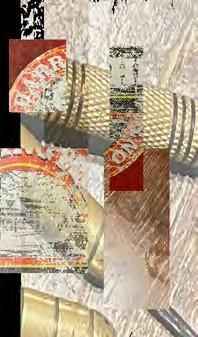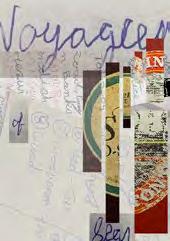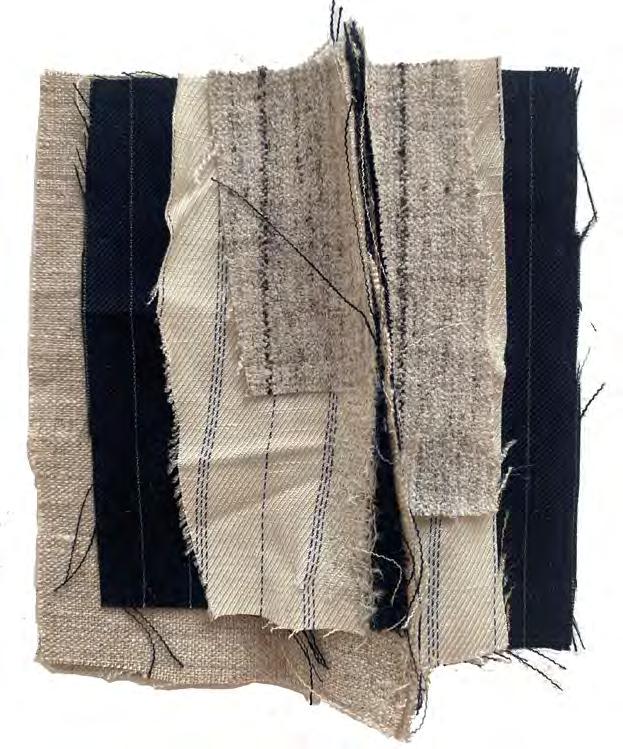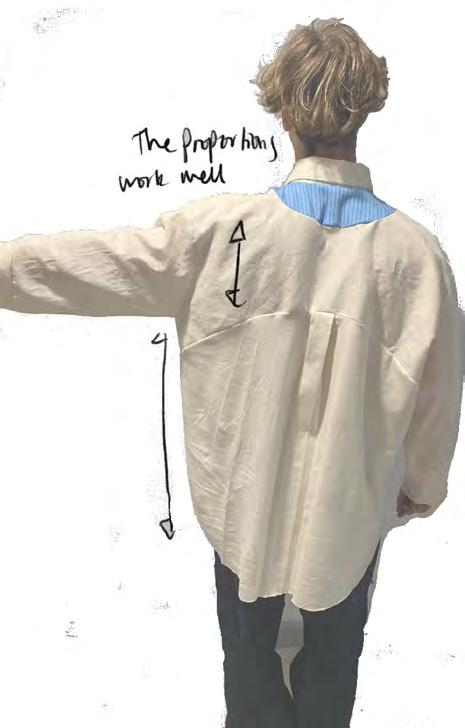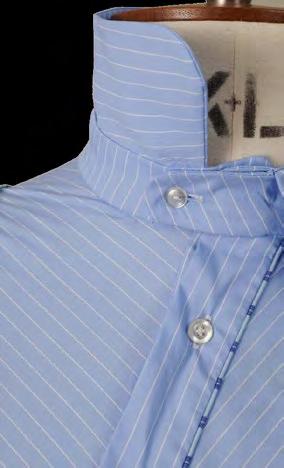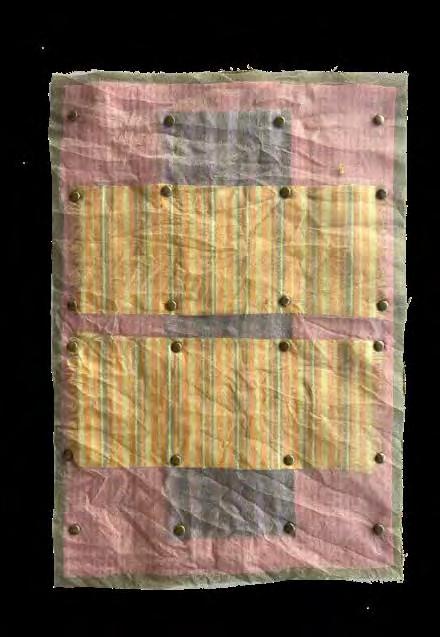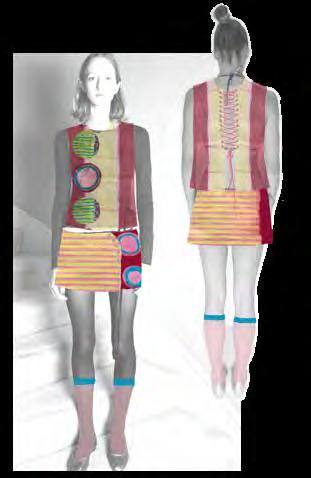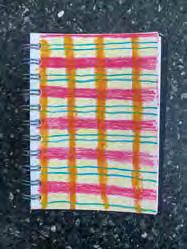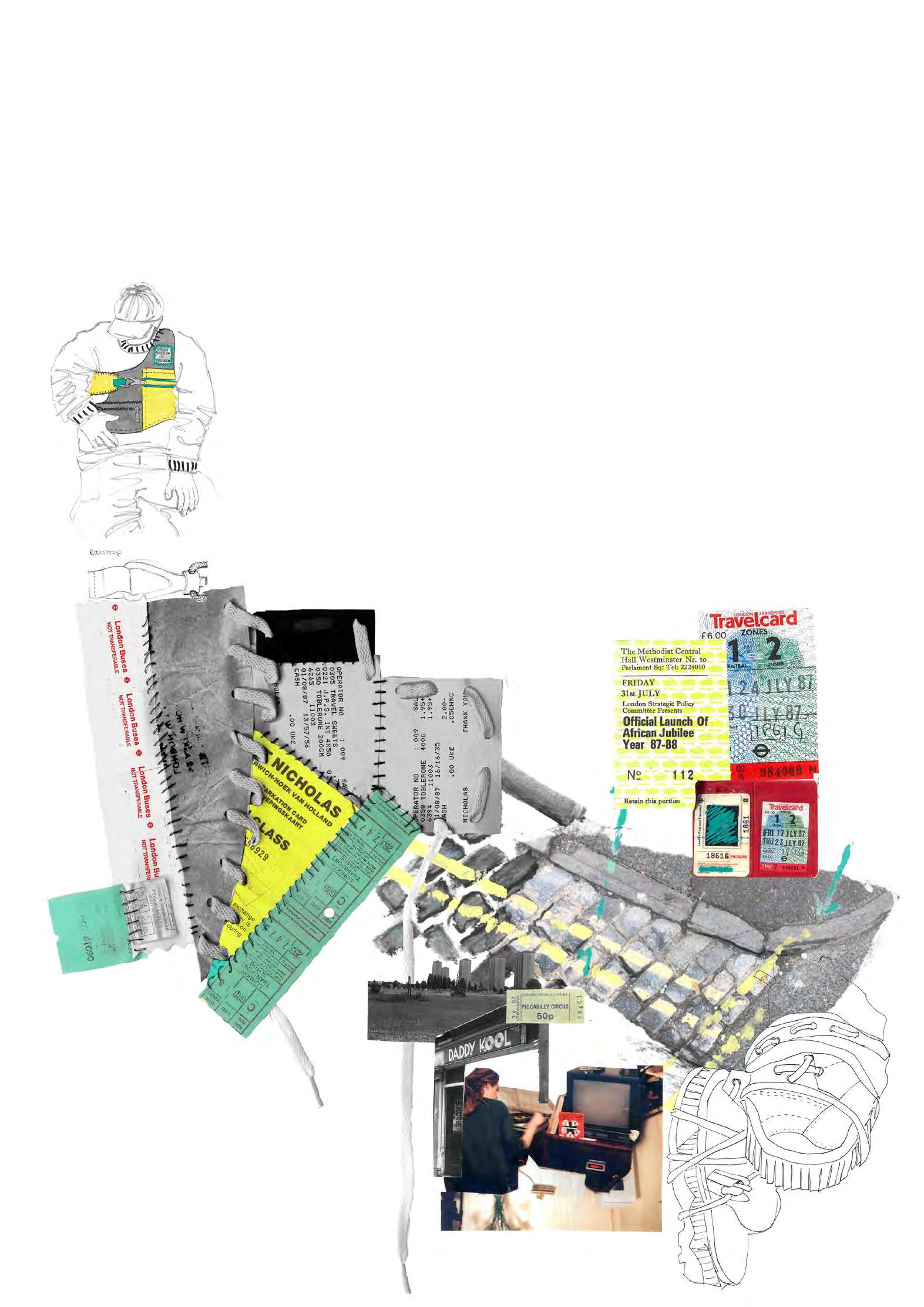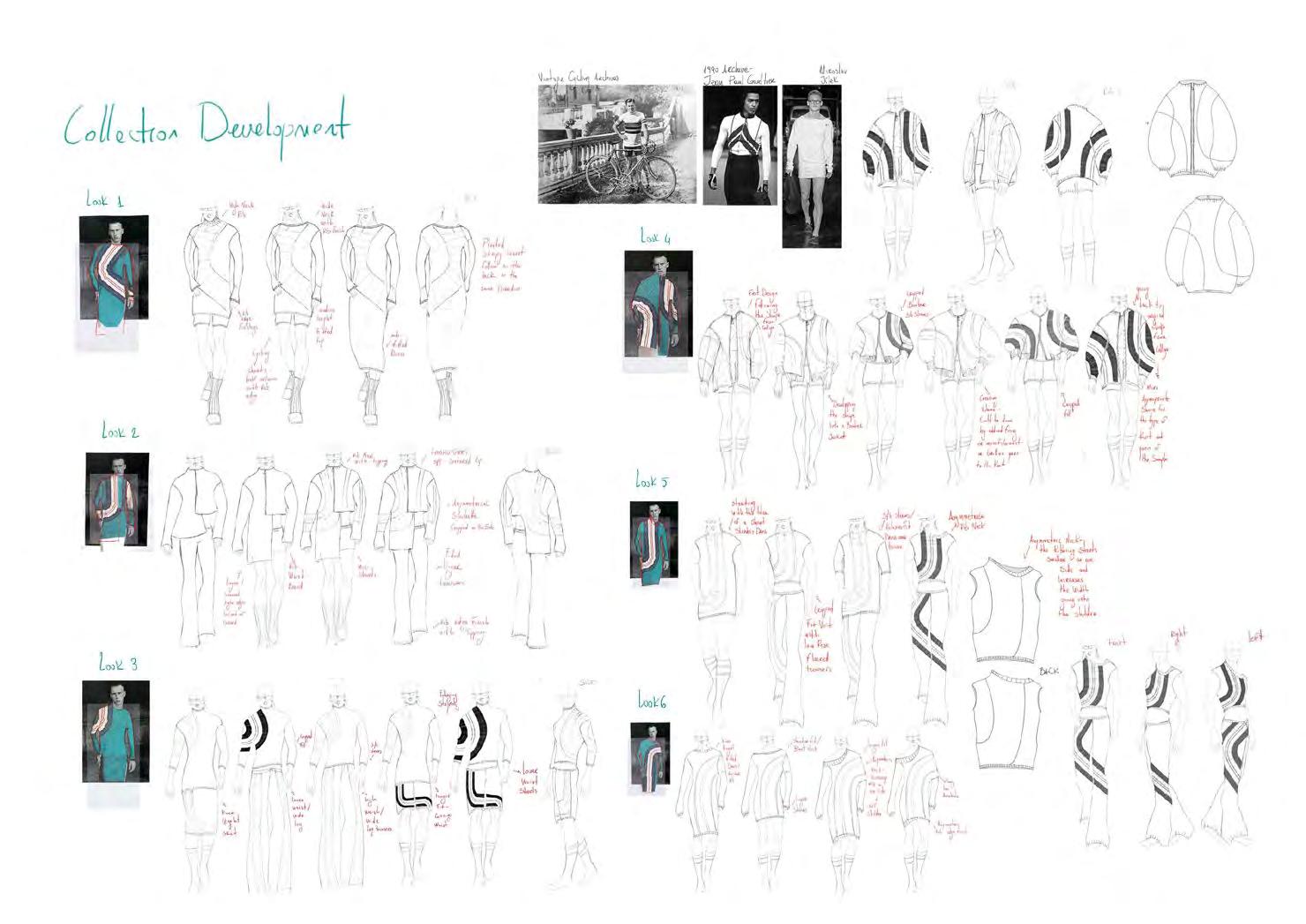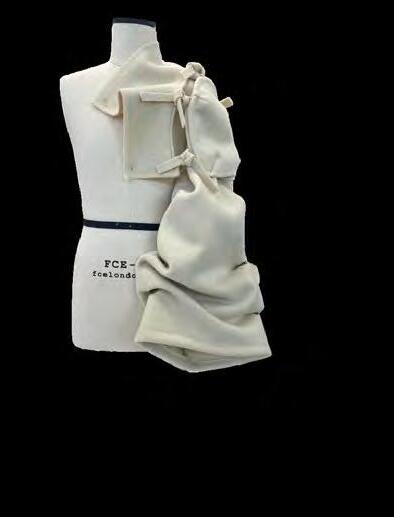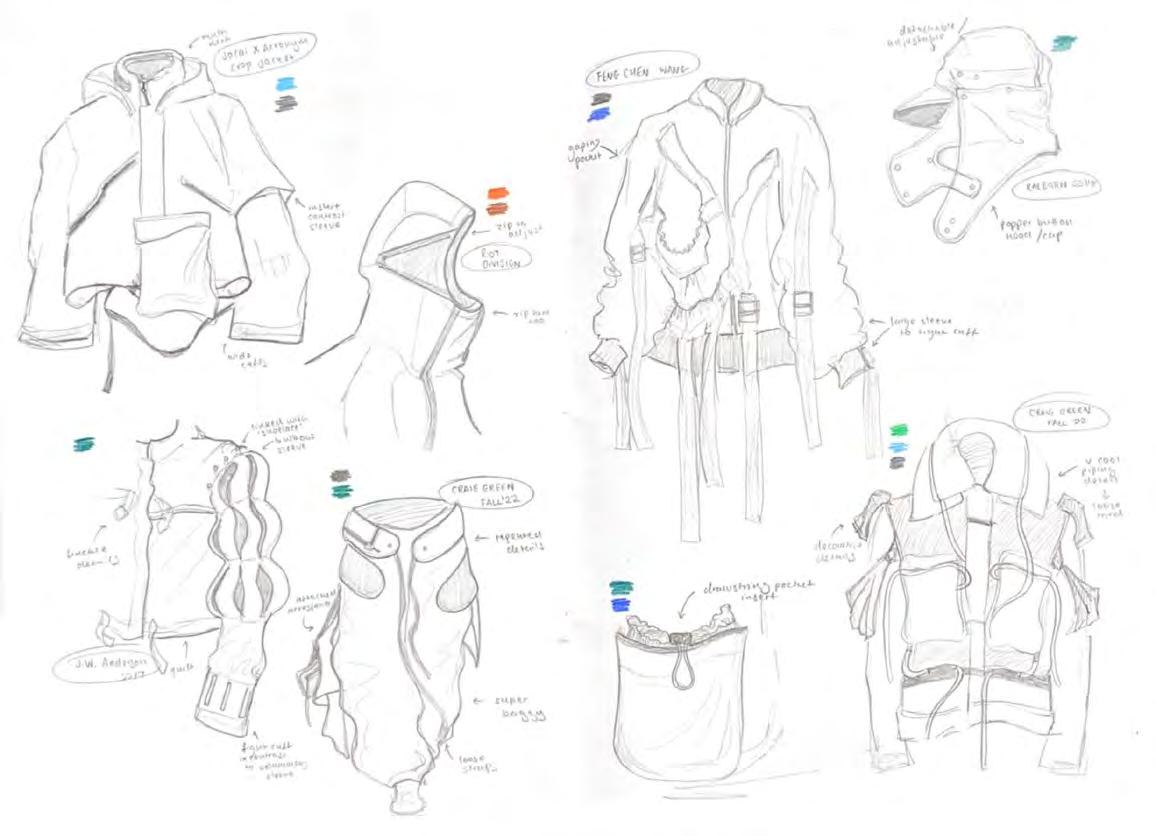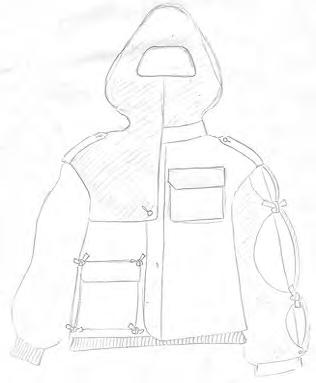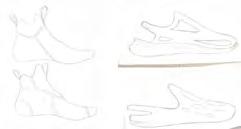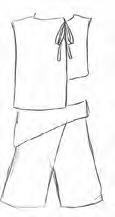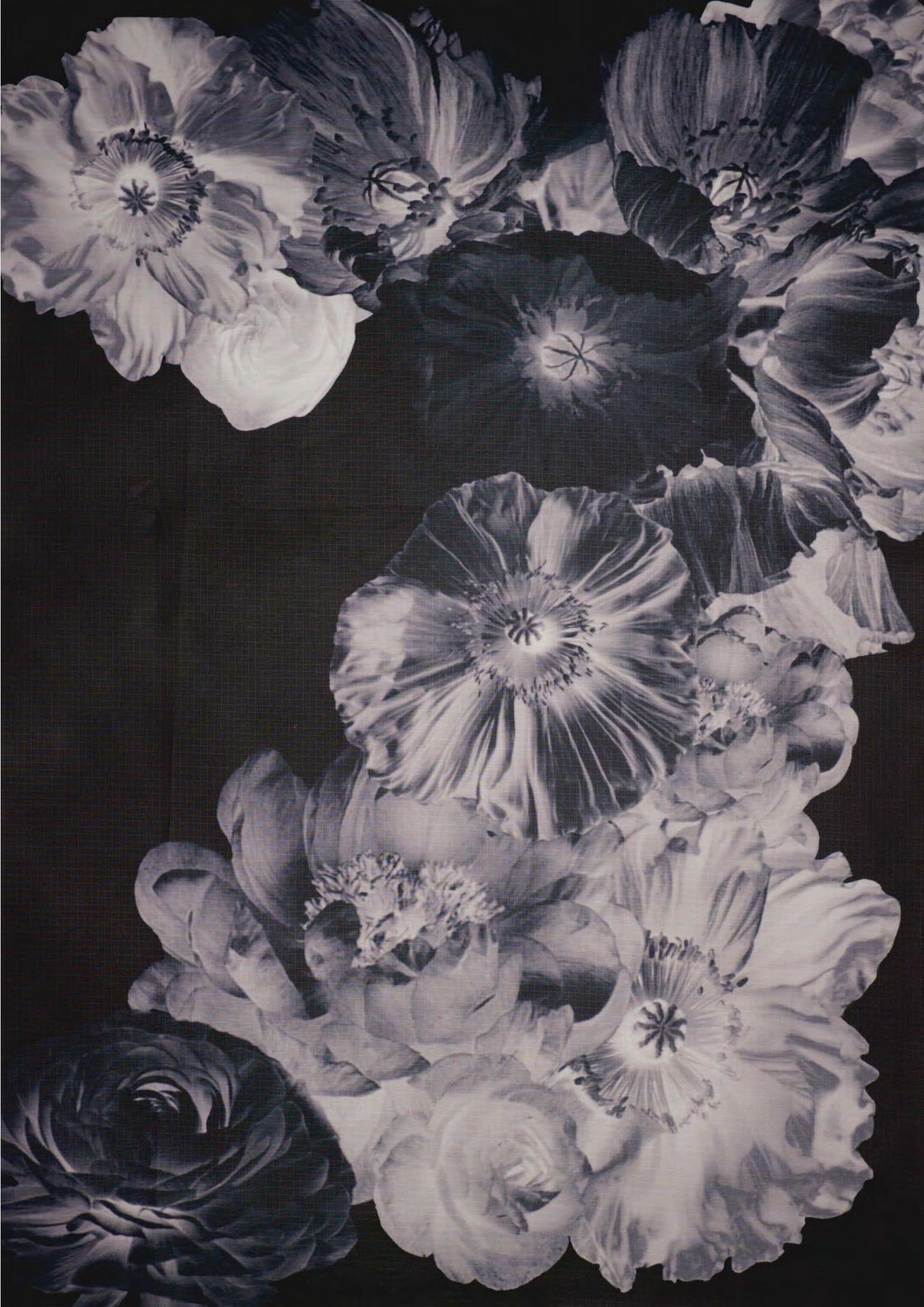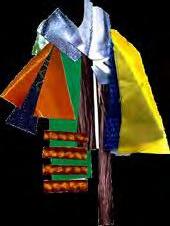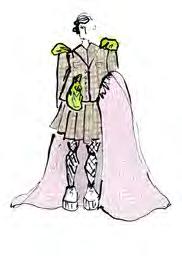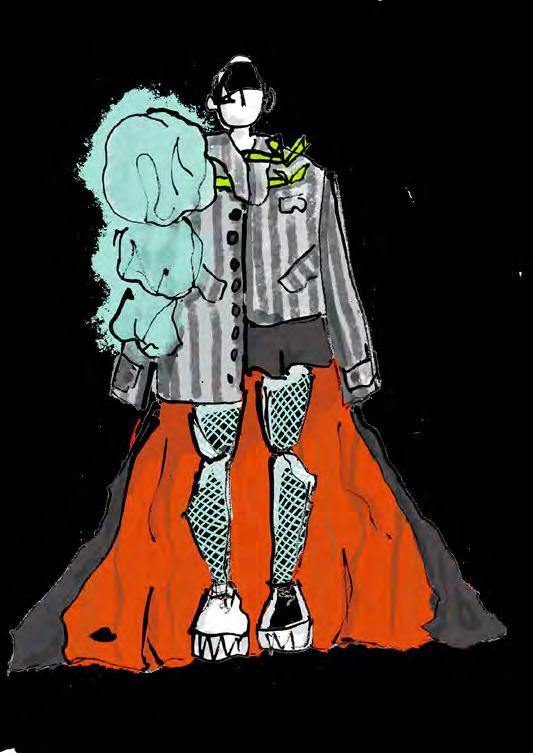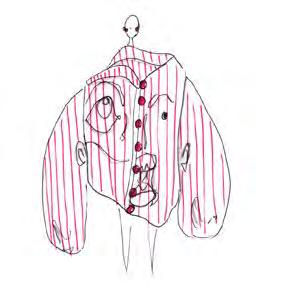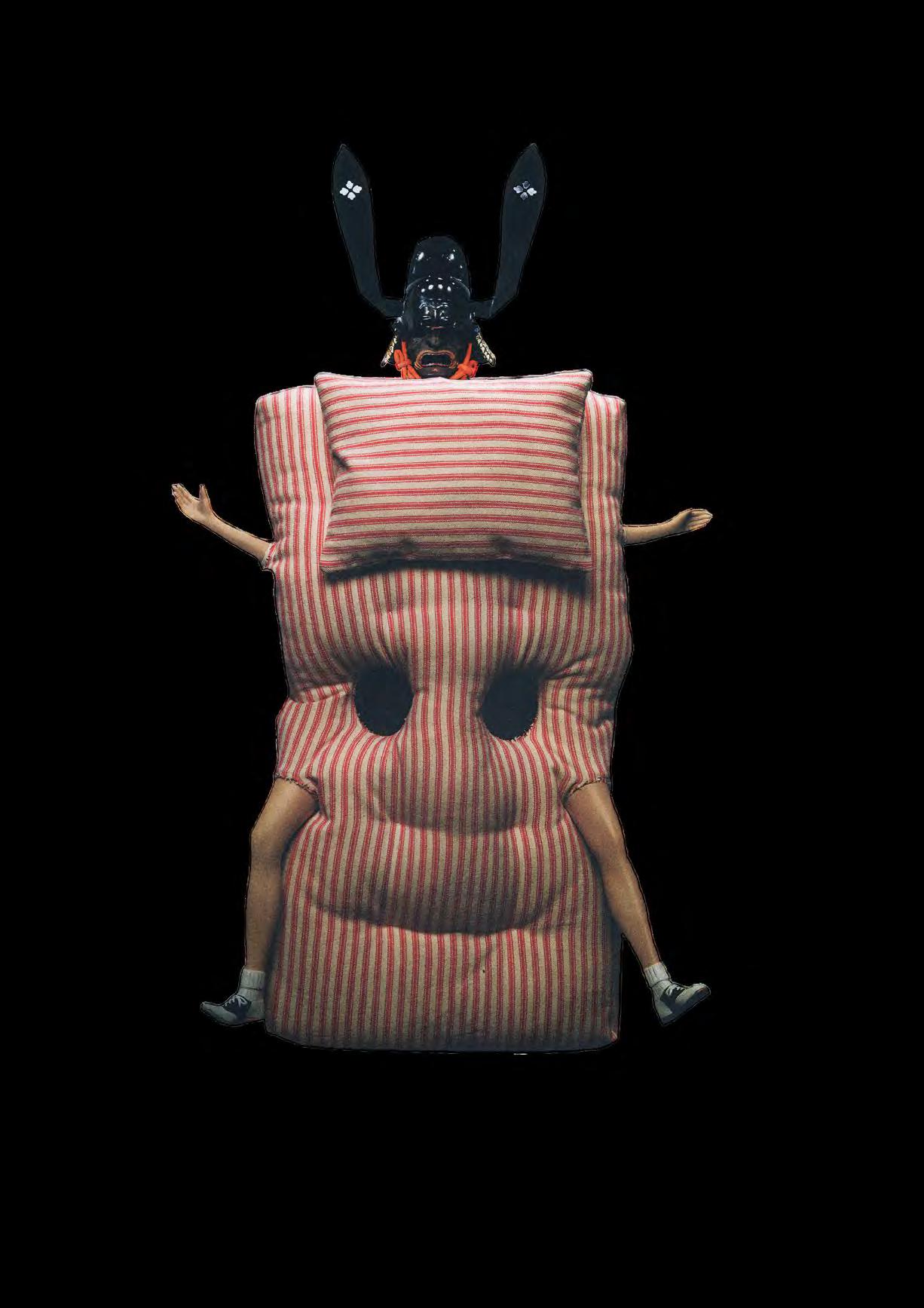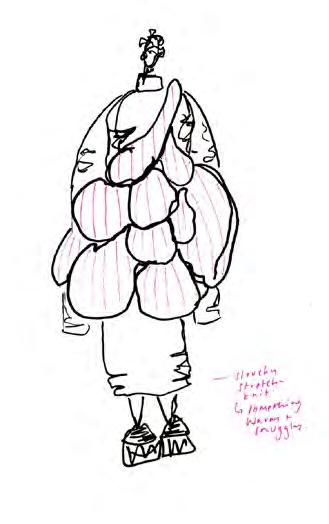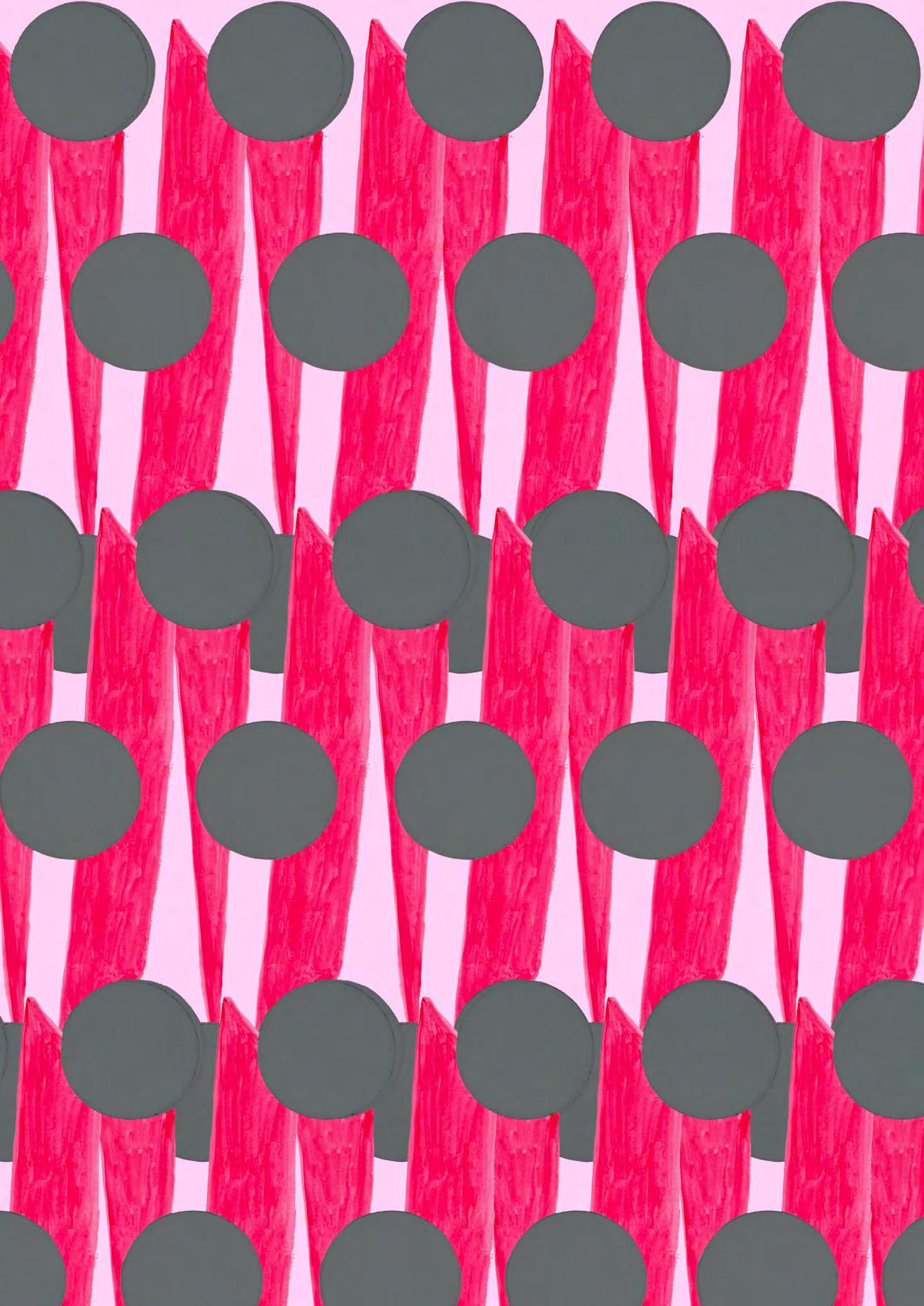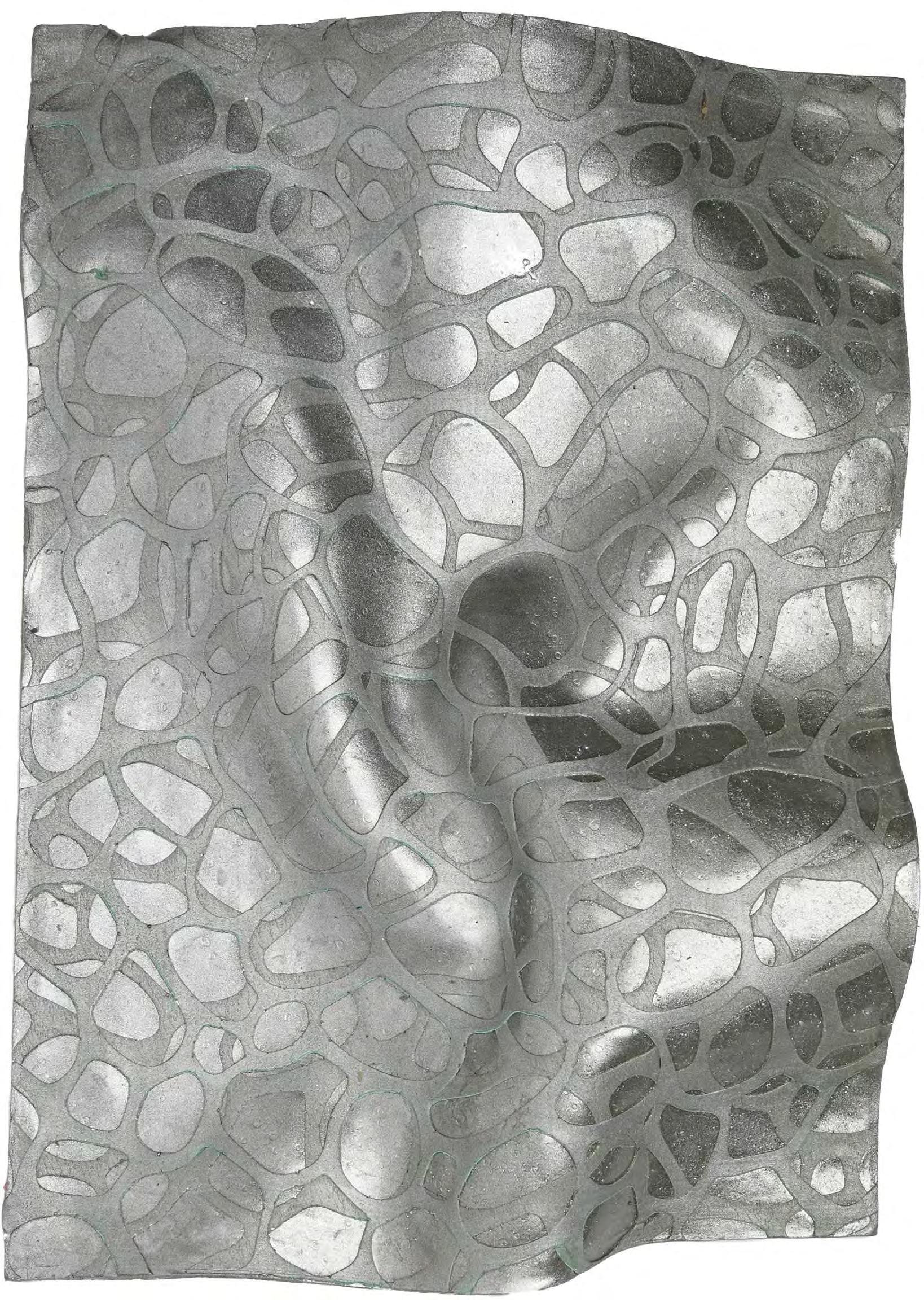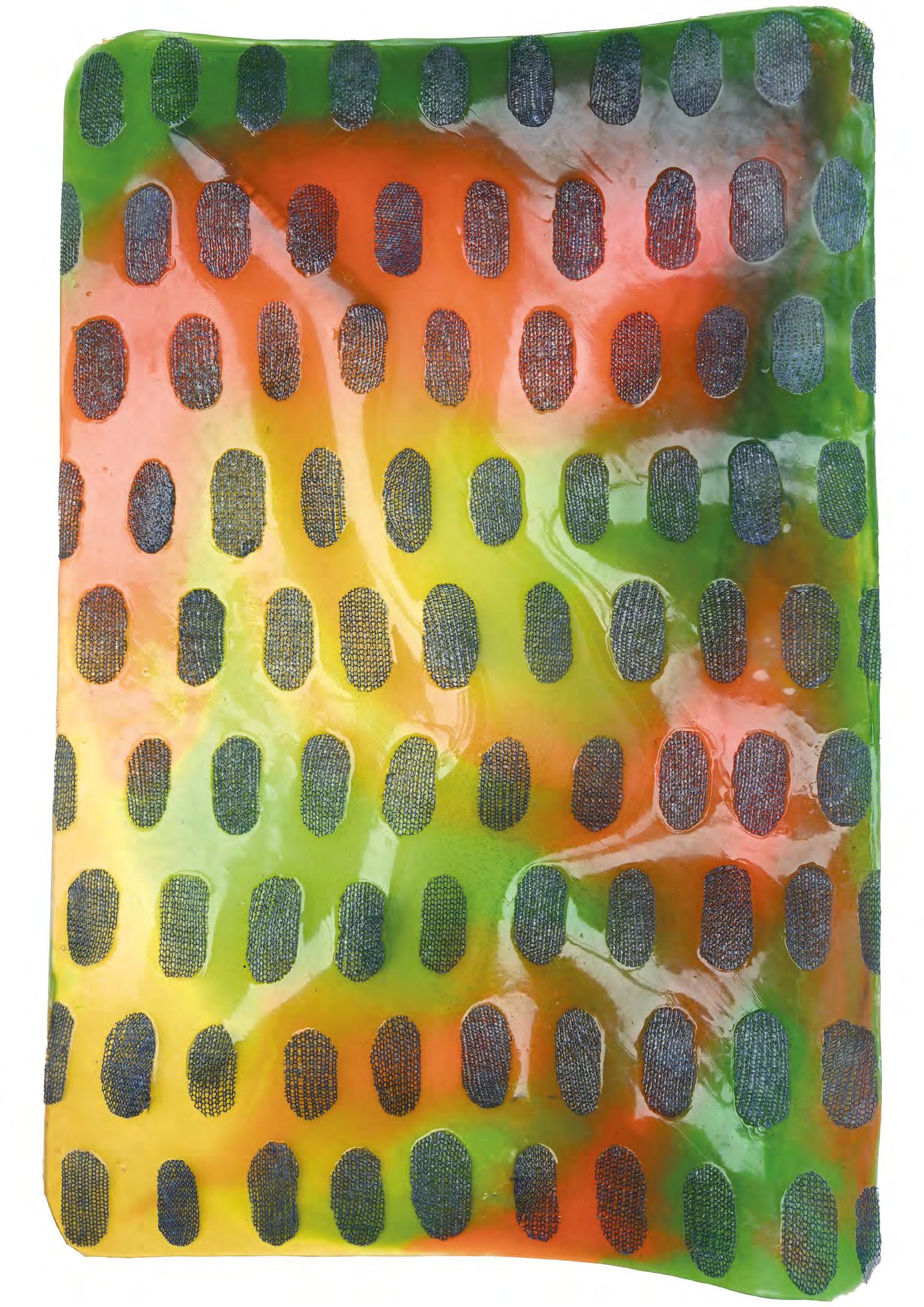S howca se |20 24
Welcome to UWE Fashion Textiles Class of 2024
These students joined the programme with a broad interest in fashion textiles; a curiosity and a hunger to learn. They graduate as fully formed creative practitioners with a vast portfolio of skills, experience and knowledge about their subject.
They have been challenged to think and do in new ways and to explore fashion textiles in all its nuanced and complex forms. They have learnt through active processes of de and re-construction; working and re-working ideas, materials and forms through both disciplined and experimental approaches. They know the subject with their hands as well as their minds, and they know it from the inside out.
This yearbook is only a snapshot of the work they have produced and the range of their creative ability. It is their legacy to all the future fashion textiles students who will be encouraged, inspired and motivated by what they see on these pages – just as they have been by previous editions.
Class of 2024, we thank you for this legacy and we wish you every success.
Deb Southerland
Programme Leader BA Hons Fashion Textiles go.uwe.ac.uk/fashiontextiles
Graduating Designers
Cerys Aylett
Lily Baker
Lily Buckwell
Ella Carter
Lottie Cornwell
Jaia Dudok van Heel
Jess Flynn
Verity Hale
Esther Huckstep
Jade Jackson
Milly Jones
Lois Lomax
Ginny Madariaga
Emily Manion
Jade Meinema
Giorgia Montesano
Jaz Nathan
Abigail Newhouse
Ellie Newman
Alexandria Palmer-Wilcock
Courtney Pitfield
Saskia Rance
Evie Sherreard
Caitlin Smith
Finn Sproats
Rosie Tweddell
Elena Van Meeteren
Betty Yeung Chi Yau
Hannah Wilkie
Hand embroidered beading, sewn on Welsh local wool sourced from West Wales Naturals Cymru/Wales, beaded with second-hand beads and sequins from local charity shops and car boot sales in West Wales.
The West Coast, greenery and seascapes inspired me. From the breathtaking landscapes of West Wales to the rocky cliffs, scenic sandy beaches and beautiful rolling hills, I took inspiration to create embroidery and embellishments landscapes that would give an abstract representation of West Wales in a modern approach.
Why leather?
Leather has always evoked a feeling of luxury in fashion. Bringing longevity to designs, it encapsulates my artistic visions in sturdy forms. With a rich history in fashion, leather brings precision as a medium: a uniquely malleable, deeply tactile material, which can be mitred, cut and glued into geometric forms. As an animal product, it has high potential for sustainability when sourced as a by-product of the meat industry.
My avoidance of leather alternative materials is based in both artistic practice and social values. Regarding the former, the majority of these lack the richness of leather, inferior in colour tone; tactical experience; malleability; permanence and durability. With all such products being either organic or plastic in composition, the former suffer an unacceptably short lifespan, whilst the latter introduce harmful microplastics into our environment in both production and after use through elongated decomposition. The majority being of the plastic composition, they are cheaply made and often utilised for unvalued fast fashion projects with short wear cycles: the antithesis of my vision.
LOTTIE CORNWELL
It’s 2024. The dance floors of clubs are filled with digital cameras swinging from wrists and people’s bedrooms often feature a vinyl player in the corner with records stacked on the floor. The resurgence of these two items in a time of digital streaming services and smartphones is a story of how innova tion can make technological comebacks possible.
It’s 2024. The dance floors of clubs are filled with digital cameras swinging from wrists and people’s bedrooms often feature a vinyl player in the corner with records stacked on the floor. The resurgence of these two items in a time of digital streaming services and smartphones is a story of how innovation can make technological comebacks possible.
Every year the government present an updated version of the CPI Basket of Goods, a fictional trolley full of items used by the Office for National Statistics (ONS) to determine the rate of inflation. Newly relevant or trendy things are added to make it more accurate but objects seen to be obsolete are binned.
Every year the government present an up dated version of the CPI Basket of Goods, a fictional trolley full of items used by the Of fice for National Statistics (ONS) to deter mine the rate of inflation. Newly relevant or trendy things are added to make it more accu rate but objects seen to be obsolete are binned.
For the first time since Simply Red’s album ‘Stars’ topped the album chart in 1992, vinyl records have been included in the basket. The sales of vinyl were given an extra push in the UK last year by Taylor Swift’s album ‘1989 (Taylor’s Version)’ which was the biggest-selling vinyl record, and The Rolling Stones ‘Hackney Diamonds’ being ranked the highest-selling vinyl record by a British artist. This has led to what many are calling the ‘Vinyl Renaissance’ with the ONS stating that the “resurgence of popularity” meant that they should be included among the 744 other items as they are even outselling CDs in value recently.
Not only have older music listening styles come back into trend, but we have also seen a rise in
the use of film photography in previous years and over the last couple, digital cameras have made a comeback often being spotted in photos with the modern day ‘It-Girls’ such as Bella Hadid, Dua Lipa and Charli D’Amelio. Despite the incredible technological developments in smartphone cameras and their convenience, younger people are now opting to use these compact cameras as they offer an aesthetic incomparable to the latest iPhone. The clear, yet misty quality of the images highlights a reflection back to the decades past and indicates a new generation that is constantly looking back to revisit and reinvent eras.
This revisiting and reinventing suggests feelings of nostalgia among the younger generations for
things past. In a study published in the Journal of Personality and Social Psychology, researchers asked people to describe under what circumstances they become nostalgic. The most frequently reported triggers were negative emotions and mood states, particularly loneliness. The investigators sampled a group of college students through exploring the effect of media on them with some being made to read negative, distressing stories and some reading neutral or positive ones. The study revealed that those who read the negative stories were more likely to engage in nostalgia than the others, suggesting that nostalgia is a way of coping with distress by temporarily escaping the pain of the present.
things past. In a study published in the Journal
cumstances they become nostalgic. The most tions and mood states, particularly loneliness. The investigators sampled a group of college students through exploring the effect of media tive, distressing stories and some reading neutral or positive ones. The study revealed that those who read the negative stories were more likely ing that nostalgia is a way of coping with distress
Nostalgia offering a method of escapism was also evidenced by the University of Southampton in a 2013 study which demonstrated feeling nostalgic about the past will increase optimism about the future. The study further highlighted the role self-esteem plays in this. Dr Wildschut explains: “Nostalgia raises self-esteem which in turn heightens optimism. Our findings have shown that nostalgia does have the capacity to facilitate perceptions of a more positive future. Memories of the past can help to maintain current feelings of self-worth and can contribute to a brighter outlook on the future. Our findings do imply that nostalgia, by promoting optimism, could help individuals cope with psychological adversity.” After the pandemic of COVID-19 which left younger people in particular, feeling isolated and lonely, it’s no wonder that in recent years we have seen the rise in ‘older’ technologies which may remind people of ‘better’ times.
In an interview with Dazed, Katie Glasgow, a video creator, indie musician and digital camera TikToker, says “The nostalgia is a big part of it, the photo quality looks like photos from our childhood. The mechanical sound of the zoom, the blur and pixelation, the harsh flash against the faces of groups of friends, it creates its own version of memory that’s somehow more real and more dream-like at the same time.” Digital camera photography also offers a form of delayed gratification by taking the photos on a separate device than the smartphone means the process of uploading them to social media often is a lengthier one, involving USBs to transfer the images to a computer and then to the phone. The industry also understands the increasing consumer need for tangibility both through these digital cameras promoting printing of the photos arguably more so than smartphones, as well as with the ‘Vinyl Renaissance’ demonstrating some people want to possess an object they can touch and display in their homes. It just helps that it fits a ‘vintage aesthetic’!
Whilst we have definitely seen a significant rise in the popularity of digital cameras and vinyl amongst younger generations again, not every comeback is possible. Many products and technologies disappear because they have nothing useful to bring anymore. But when a new product starts dominating, it may be a good idea to remember the 20-year cycle of trends and have a look at what existed two or three generations before. The positive emotions of nostalgia people feel when using these older technologies are powerful in offering optimism about the future but we shouldn’t fall in love with nostalgia too quickly. As Joshua Fields Millburn wrote in his blog, “There’s a problem with nostalgia, it only tells half-truths.”
Nostalgia offering a method of escapism was ton in a 2013 study which demonstrated feeling nostalgic about the past will increase optimism about the future. The study further highlighted the role self-esteem plays in this. Dr Wildschut explains: “Nostalgia raises self-esteem which in turn heightens optimism. Our findings have shown that nostalgia does have the capacity to facilitate perceptions of a more positive future. rent feelings of self-worth and can contribute to a brighter outlook on the future. Our findings do imply that nostalgia, by promoting optimism, could help individuals cope with psychological adversity.” After the pandemic of COVID-19 which left younger people in particular, feeling isolated and lonely, it’s no wonder that in recent
In an interview with Dazed, Katie Glasgow, a video creator, indie musician and digital camera TikToker, says “The nostalgia is a big part of it, the photo quality looks like photos from our childhood. The mechanical sound of the zoom, the blur and pixelation, the harsh flash against the faces of groups of friends, it creates its own version of memory that’s somehow more real ital camera photography also offers a form of delayed gratification by taking the photos on a separate device than the smartphone means dia often is a lengthier one, involving USBs to transfer the images to a computer and then to the phone. The industry also understands the increasing consumer need for tangibility both
phones, as well as with the ‘Vinyl Renaissance’ demonstrating some people want to possess an object they can touch and display in their homes.
Whilst we have definitely seen a significant rise in the popularity of digital cameras and vinyl amongst younger generations again, not every nologies disappear because they have nothing useful to bring anymore. But when a new product ber the 20-year cycle of trends and have a look at what existed two or three generations before. The positive emotions of nostalgia people feel when fering optimism about the future but we shouldn’t ua Fields Millburn wrote in his blog, “There’s a
After the devastating news of current Prime Minister, Rishi Sunak, wearing a pair of the beloved Adidas Samba sneakers, journalist Esther Huckstep explores the effect of political fashion psychology on the general public.
“Thinking of the Adidas Samba community at this difficult time,” Ed Cummings, journalist, tweeted when the now-viral video hit our Instagram feeds of current prime minister, Rishi Sunak, promoting his tax policies whilst sporting a pair of the popular sneakers on his feet. Within seconds of the video’s release last Thursday, a league of journalists, fashion pundits and sneakerheads were up in arms on social media platforms. One of the most popular opinions shared in response seems to be one surprisingly articulated by Daily Mail’s headline: “Rishi Sunak roasted after wearing Adidas Sambas to ‘try and appear normal’.”
To understand the detrimental impact this has had on many Samba fans, one must first understand that Sambas are the new ubiquitous red postboxes of England: you are never less than ten metres away from some, or if you are, have a look around the corner. The trainers have been labelled the ‘It-shoes’ of the year and are seen as a collaboration between executive, football and fashion, resulting in the ultimate shoe. Their vintage roots can be traced back to 1950 when a German team needed a revolutionary shoe specifically designed for icy and snowy pitches, and alongside ‘Superstars’, are one of the oldest designs of Adidas. Elizabeth Semmelhack, footwear historian, stated in the Times that she can hear “the death knell” of the ‘cool’ retro trainer. After all, it’s not like the Sambas’ popularity has faded into the abyss like many other shoes deemed ‘uncool’ over time, they have had an axe taken to them and been hung on a sign reading ‘TORY!’ It’s hard to think of anything else that would kill off an item’s perceived ‘cool’ more than being worn by a widely condemned politician.
Sunak has since issued a “fulsome apology to the Samba community” in an interview with LBC Radio, however in the same breath followed this up with a defensive “I would say I have been wearing Adidas trainers including Sambas - and others, in factfor many, many years” further going on to state that he is a “longtime devotee” to the popular German brand. However, Sunak has been known to have some… issues with his relatability consid-
ering his alienation of the general public when he admitted to having no working-class friends and not forgetting the time when he talked about loading the dishwasher. Many believe this is yet another stunt pulled by the prime minister to seem more ‘downto-earth’. Regardless of the truth, the concept of politicians attempting to use fashion to their advantage is not farfetched.
Whilst Sunak is speculated as attempting to create an image of relatability, there are cases of other politicians or political figures using fashion as a tool to relay more serious agendas. Throughout history, clothing articles have been used as a political language to represent and articulate power. In the era of colonisation, colonial powers used clothing to assert authority, however, in response various colonised societies used the politics of clothing to demonstrate the culture of the colonised society and revolt against the politics. In 1921, Mahatma Gandhi, an anti-colonial nationalist amongst other things, decided to wear attire to Loincloth or Dhoti, not as a revolt but to identify himself with the poor masses, and as a symbol of humility. Politicians are by no means considered style icons but they do use clothing as a medium through which they carefully craft their message and uphold their values in society.
In the United States of America, Michelle Obama used her Inauguration Day attire of a classic yellow tweed Isabel Toledo ensemble to assert her own political agenda. Amongst a city plastered in red and blue, the sunny shade not only stood out but made reference to its first debut in political circles during the suffrage movement. At the dawn of the twentieth century, politicians wore a yellow rose in their lapel if they were for the Amendment to grant women voting rights and a red rose if they were against it. According to Dr. Mary Ellen Balchunis, a professor at La Salle University who specialises in women and politics, the history behind the colour has resulted in it being seen as a positive political symbol today. Michelle Obama is a known supporter of women’s rights and from the beginning of both her and her husband’s political careers, it is thought that she has made her personal morals evident as First Lady through her fashion attire.


Margaret Thatcher, a Conservative politician who served as Prime Minister of the UK from 1979 to 1990, also used her personal fashion to consciously deploy elements of her political persona to the general public many times across her career. Particularly significant, in media and public perception, were Thatcher’s outfits for one of her most famous foreign visits. In 1987, weeks before the election campaign, Thatcher accepted an invitation to visit the Soviet Union and discuss with President Gorbachev improving East/West relations. The prime minister wrote that choosing the clothes for the visit to Moscow was her “biggest challenge” yet in her 1993 autobiography: ‘The Downing Street Years’, and expressed that she dressed specifically to make a dramatic impact on Soviet political leaders, and the public both in the Soviet Union and the UK. Thatcher arrived in Moscow, stepping down from the aircraft in a Philip Somerville Russian-style black fur hat, black coat with wide shoulder pads and a ‘statement’ diamond broach. The dress dominated UK and Russian media reports of the Prime Minister’s visit, and also even attracted attention from the US and European media. The Sun ran a “Moscow Maggie” headline and the Times stated, “Mrs Thatcher looked marvellous in those fur hats.” The focus on her appearance did not seem to belittle her, but instead emphasised Thatcher’s international status and political acumen. Despite Thatcher being widely reviled, it is thought that the Moscow visit and the imagery generated by Thatcher’s dress were significant in increasing popular support for the Conservatives in the subsequent general election.
Dress and its relationship with political culture remains an underdeveloped aspect of political sociology, international relations and history. Despite the Samba incident being what some may call ‘trivial’, you can’t dispute that the focus on politicians’ appearance expressed in media provides evidence that clothing plays a significant part in conveying a whole persona and personality to the general public. SUNAK IS
Photograph by Tom wood in ‘men’
A Notebook and a Pint of Real Ale
‘We generally assume our objects belong to us, and generally we are right. But there are times in life when we belong to our objects.’
The uncommon life of common objects by Akiko Busch
Bib
Sample size: Mens S
AW24 Type: Mens Shirt Name: Bib Shirt
Name:
Shirt
From the book ‘Vintage menswear’ A collection from the vintage show room. By: Douglas Gunn
Sample 1 Hand dyed Haboitai Silk with screen print silk dye stripe. hand stitch knaki cotton with discharge diamond screen pattern.
Sample 2 Pink hand dyes cotton with 100% wool (sourced deadstock) stripe felted knit. Polyester thread stitch with heavy cotton squared with copper rivets and hand painted discharge paste circles.
Sample 7 screen print and dyed stripe silk with pink cotton layer hand stitched with polyester thread and free brushed devoure paste effect. Gold bead detail and handmade copper domes.
Sample 6 3 layers and chiffon stitched with cotton thread with cotton patches.
Sample 3 cotton linen stripe woven fabric dyed pink and freyed edge. with applique stripe patch and handmade stonewear ceramic beads.
Sample 8 heavy knaki cotton weave with waxed cotton attached by rivets. pink cotton stripes and gold knit patch all hand stitched together.
Sample 4
Deadstock dyed pink stripe fabric with hand dyed chiffon and deadstock layered cotton ,loose weave, with stitch cotton thread and waxed cotton cord weave.
Sample 9 grey waved cotton stitched to knaki diamond screen print layer and devoure hole design with copper rivets in. And a hand dyed stripe cotton patch.
Sample 5 Check screen print cotton with chiffon layer and cotton stitch. hand dyed stripe fabric with stripe applique patch and copper rivets .
Sample 10 Khaki heavy cotton with pink stripe cotton layer above. the dyes purple stripe cotton and screen printed and dyes yellow linen above with final chiffon layer attached with copper rivets.
X JADE MEINEMA
Yarn: PET yarn Tension:15
Gauge: 8
Technique: Mending with foil screenprint
Trim: Chunky alpaca 1x1 rib
spacesuit brief.
Glove style lines
WW2 Zephyr balloons
Craig Green, Massimo Oosti
Recycled
sac a i x abbie
- Sun-ray pleats and gathering
- How to hold structure?
= Boning
= single thread seam
= Binding on the folds
- Waistband?
- Domes and spirals from the Baroque-style architecture research
- forming a shelter
- Extra volume at the back
- Merging the edges on the side
- Gathered and fixed
1. How is it gonna work on a body?
2. Gravity and construction- architectual material to support
3. Buckram or collar stiffener
4. Sun-ray pleats?
- How these two pieces attach?
- Soft fabric and creay paper = different thickness
- Two spirals formed by twisting to create volume
- Spiral form movments
- Structure forms on the curve lines
- 2D surface on top of 3D structure
- How to support?
=lightweight =thin =accessible to a big area
- Juxtaposition on body
- Natural drape
- Cylinder of soft pleated fabric require big coverage=a shelter?
- Create volume imitating butt pads and crinolines
- Gathering and foldng
- Folding create permanent creases to hold structure
- Fold against pleats to form structure
- Twisting and foldng
- Placements on body=accessories
/ garment pieces?
- Angular and stuctural silhouette
- Extra volume drape on body
- Curve lines formed by twisting and swirling
- Supporting structural form
- Focus on thickness of pleats
- Intergrate with pleated fabric
- Combine plated paper abd fabric
- Layering and contrast of fabrics
- Focus on how pleats perform on paper vs fabric
- How to work along the bod?
- What to replace tape?
- Hong Kong heritage
- Big silhouette with hourglass details
- Integrate with girly motifs/embroidery
- Lightweight and luxurious fabric choice
- Inspired by artist Louise Bourgeois
- Structural form
- Clean and curvy silhouette
- Geometric patterns
- Concentrated colour
- Unexpected placement of hollow spaces
- Big hole at the back
- The silhouette is simiar to putting hands in gloves
- Casting in elastic fabric
for “the unknown political prisoner”(1962)
Exhibition(2018)
Houte Couture(1982)
Moquette
Houte couture(1971)
Aeron FW24
Bicentric form(1949)
Houte couture (1984)
Stive Gaga AW24
- Structural back
- Different thickness (denim and buckram)
- Extremely puff make it extra warm
- Similarto cropped extra petute sleeveless down jackets
Alexander McQueen
- Exaggerated sleeves
- extended shoulders
- enlarged storm flap and collars
Enlarge storm flap to cape?
- Technical deails
- deconstruction
- Exaggerated sleeves and pants
Celine SS18 ready-to-wear
- Cape coat
- Extended hem fold back to form cape/coat
- Colour blocks
from previous project
Sacai SS23
Loewe
Lovechild 1979
Sample
Oblique forms A/P(1971)


